Assessment of Damage and Adaptation Strategies for Structures and Infrastructure from Storm Surge and Sea Level Rise for a Coastal Community in Rhode Island, United States
Abstract
:1. Introduction
- Estimate the inundation, wave attack, and erosion damage to the existing structures and infrastructure caused by a 100-year storm event, with and without 7 ft of sea level rise, and estimate the total damage;
- Identify adaptation strategies to reduce the damage from inundation, wave attack, and erosion; and
- Determine the impact associated with each adaptation strategy.
2. Methods
2.1. Classification of Structures
2.2. Inundation, Waves, and Erosion
2.3. NACCS Damage Functions
3. Results and Discussion
3.1. Assessment of Damage from Inundation and Waves
3.2. Evaluation of Adaptation Strategies
3.2.1. Dune Restoration
3.2.2. Mitigation of Back Flooding
3.3. Benefits and Limitations of CERI
4. Conclusions
Acknowledgments
Author Contributions
Conflicts of Interest
References
- Boothroyd, J.C.; Hollis, R.J.; Oakley, B.A.; Henderson, R.E. 2016, Shoreline Change from 1939–2014, Washington County, Rhode Island. 1:2,000 scale. Rhode Island Geological Survey. 45 maps. Available online: http://www.crmc.ri.gov/maps/maps_shorechange.html (accessed on 17 October 2016).
- Boyd, J.; (University of Michigan, Ann Arbor, MI, USA). Personal communication, 2015.
- NOAA Sea Level Rise Viewer. Available online: https://coast.noaa.gov/digitalcoast/tools/slr (accessed on 17 October 2016).
- Spaulding, M.L.; Grilli, A.; Damon, C.; Crean, T.; Fugate, G.; Oakley, B.A.; Stempel, P. STORMTOOLS: Coastal Environmental Risk Index (CERI). J. Mar. Sci. Eng. 2016, 4, 54. [Google Scholar] [CrossRef]
- U.S. Army Corps of Engineers. Physical Depth Damage Function Summary Report, North Atlantic Comprehensive Coastal Study: Resilient Adaptation to Increasing Risk. Available online: http://www.nad.usace.army.mil/Portals/40/docs/NACCS/10A_PhysicalDepthDmgFxSummary_26Jan2015.pdf (accessed on 17 October 2016).
- Rhode Island Geographical Information System. Available online: http://www.rigis.org/data/topo (accessed on 14 July 2016).
- Coastal Mapping Basics. Available online: http://www.region2coastal.com/resources/coastal-mapping-basics/ (accessed on 6 April 2015).
- Spaulding, M.L.; Isaji, T.; Damon, C.; Fugate, G. Application of STORMTOOLS’s simplified flood inundation model, with and without sea level rise, to RI coastal waters. In Proceedings of the ASCE Solutions to Coastal Disasters Conference, Boston, MA, USA, September 2015.
- U.S. Army Corps of Engineers. Main Report, North Atlantic Coast Comprehensive Study: Resilient Adaptation to Increasing Risk. Available online: http://www.nad.usace.army.mil/Portals/40/docs/NACCS/NACCS_main_report.pdf (accessed on 17 October 2016).
- RI CRMC Shoreline Change Special Area Management Plan. Available online: http://www.beachsamp.org/resources/stormtools/ (accessed on 10 August 2016).
- U.S. Army Corps of Engineers. Main Report, Downtown Montauk Stabilization Project. 2014. Available online: http://www.nan.usace.army.mil/Portals/37/docs/civilworks/projects/ny/coast/fimp/DM_files/HSLRR/App_E_Public%20Access%20Plan%20Oct2014.pdf (accessed on 17 October 2016).
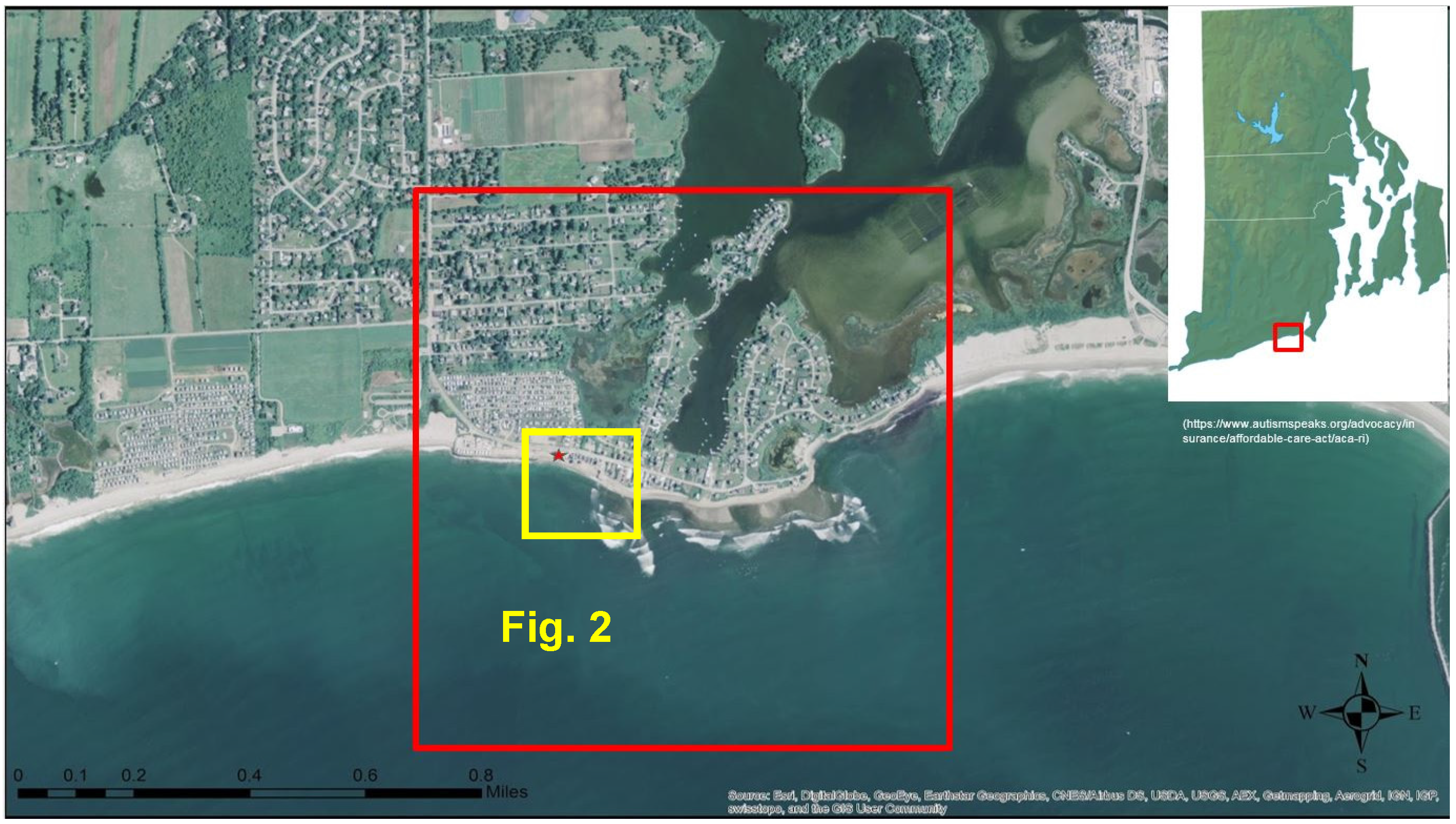
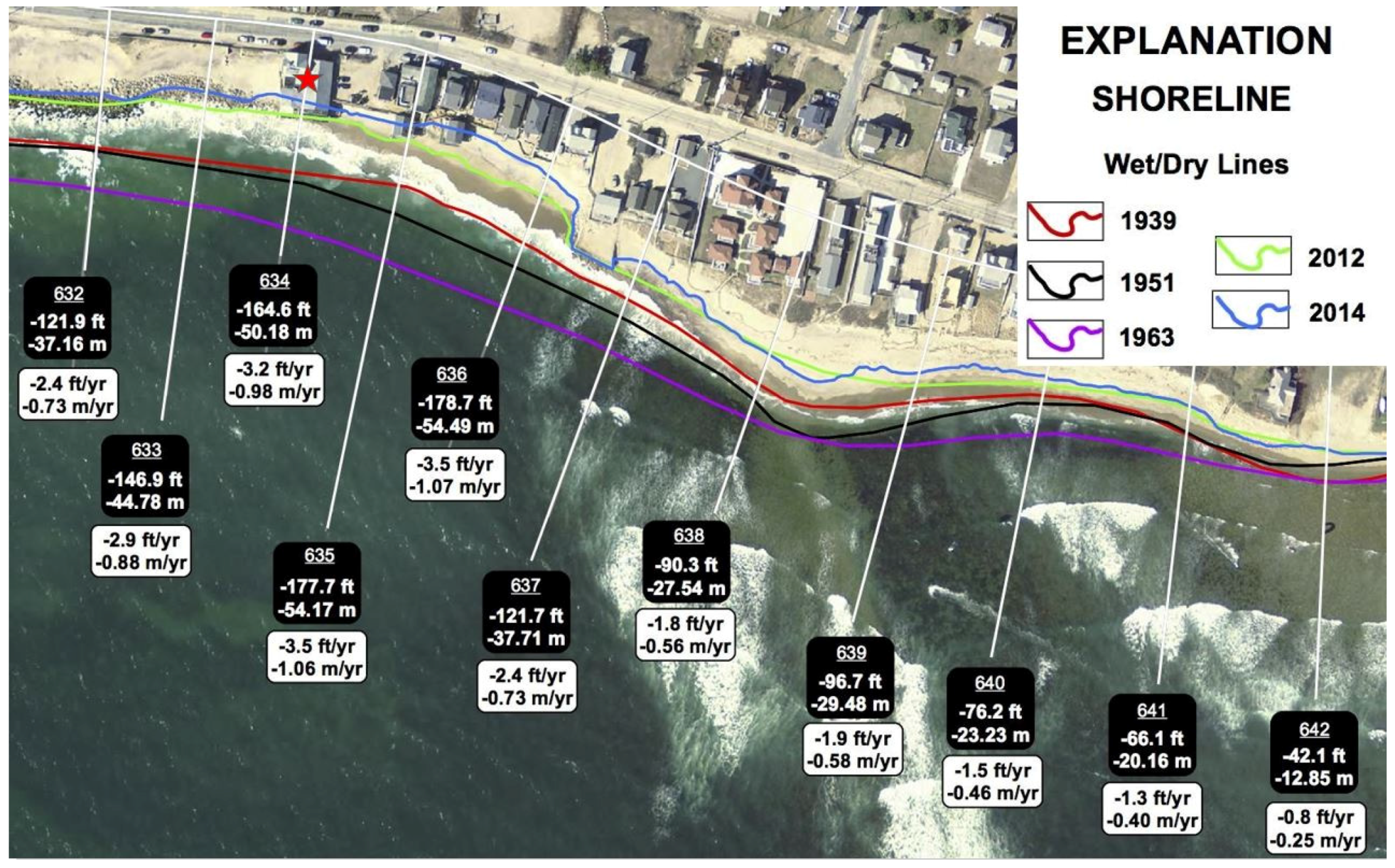
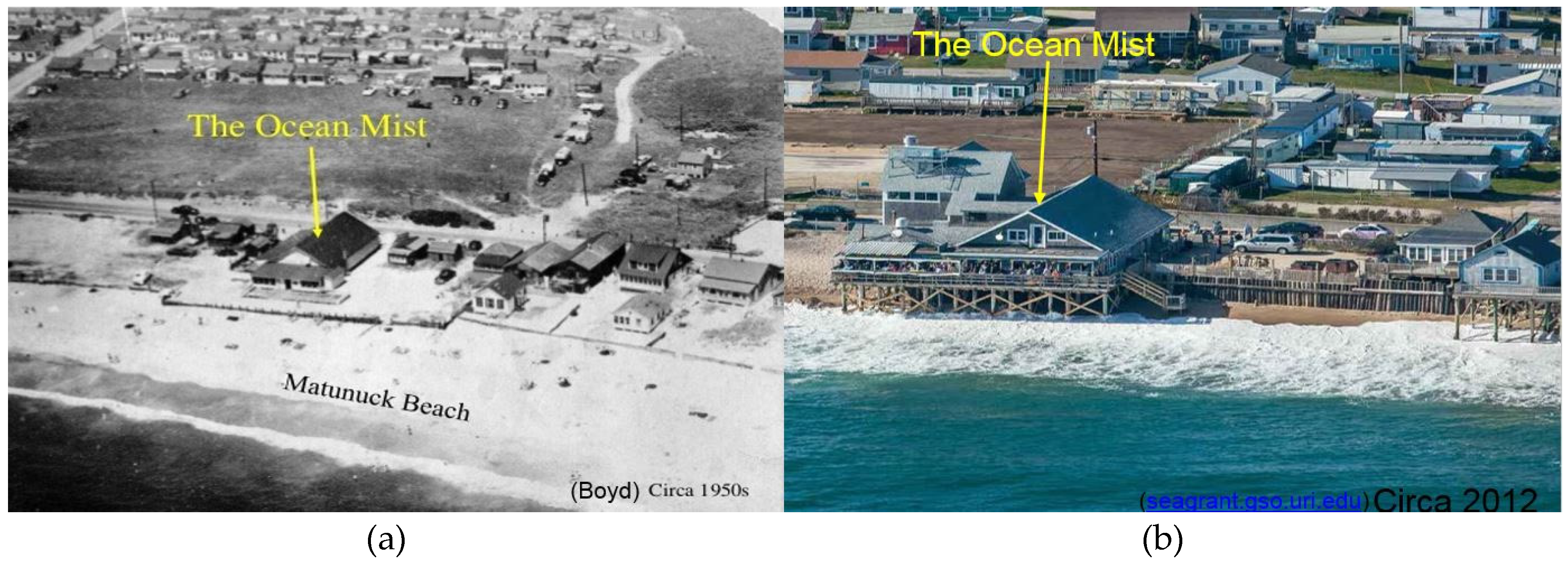
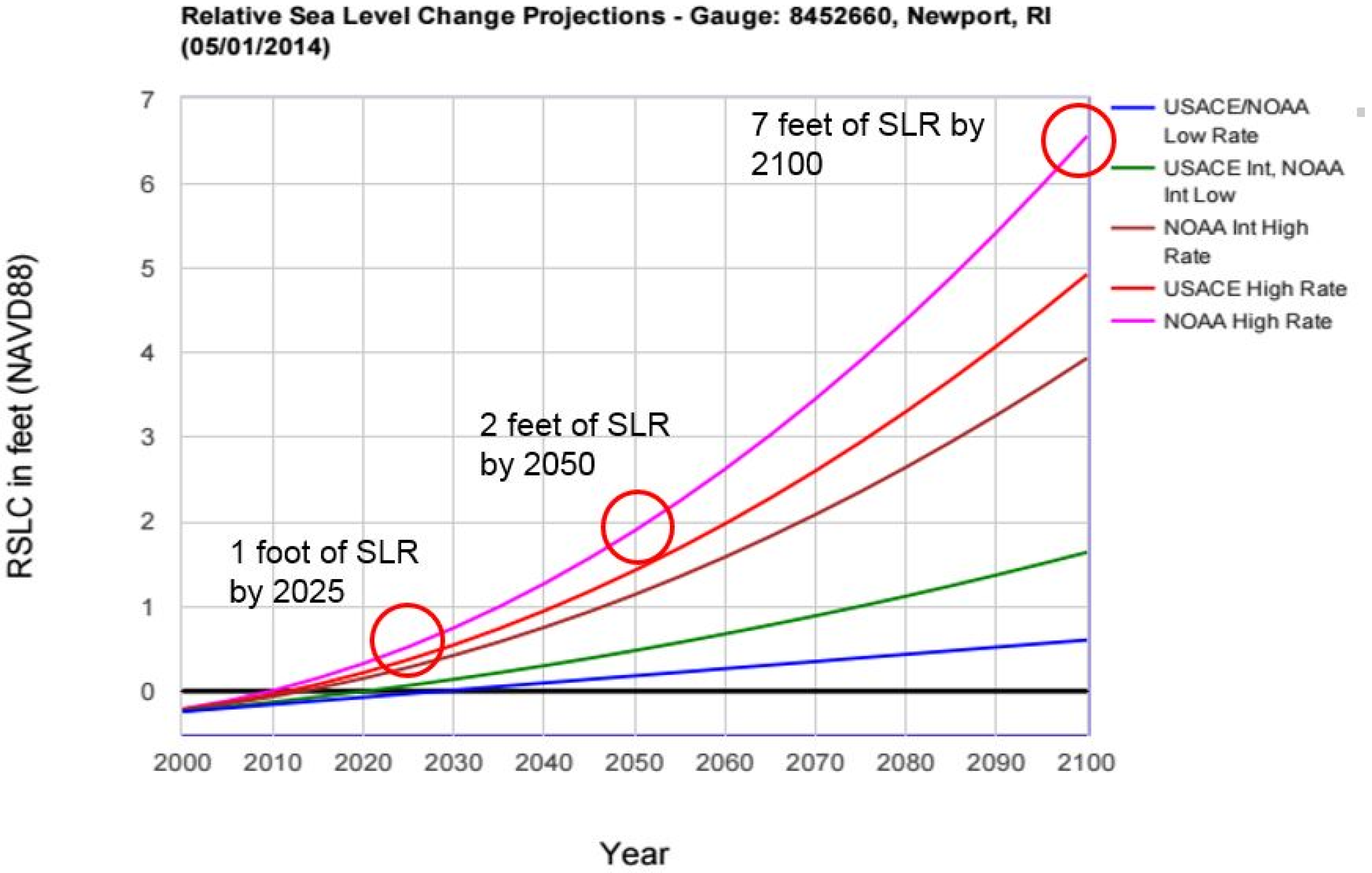
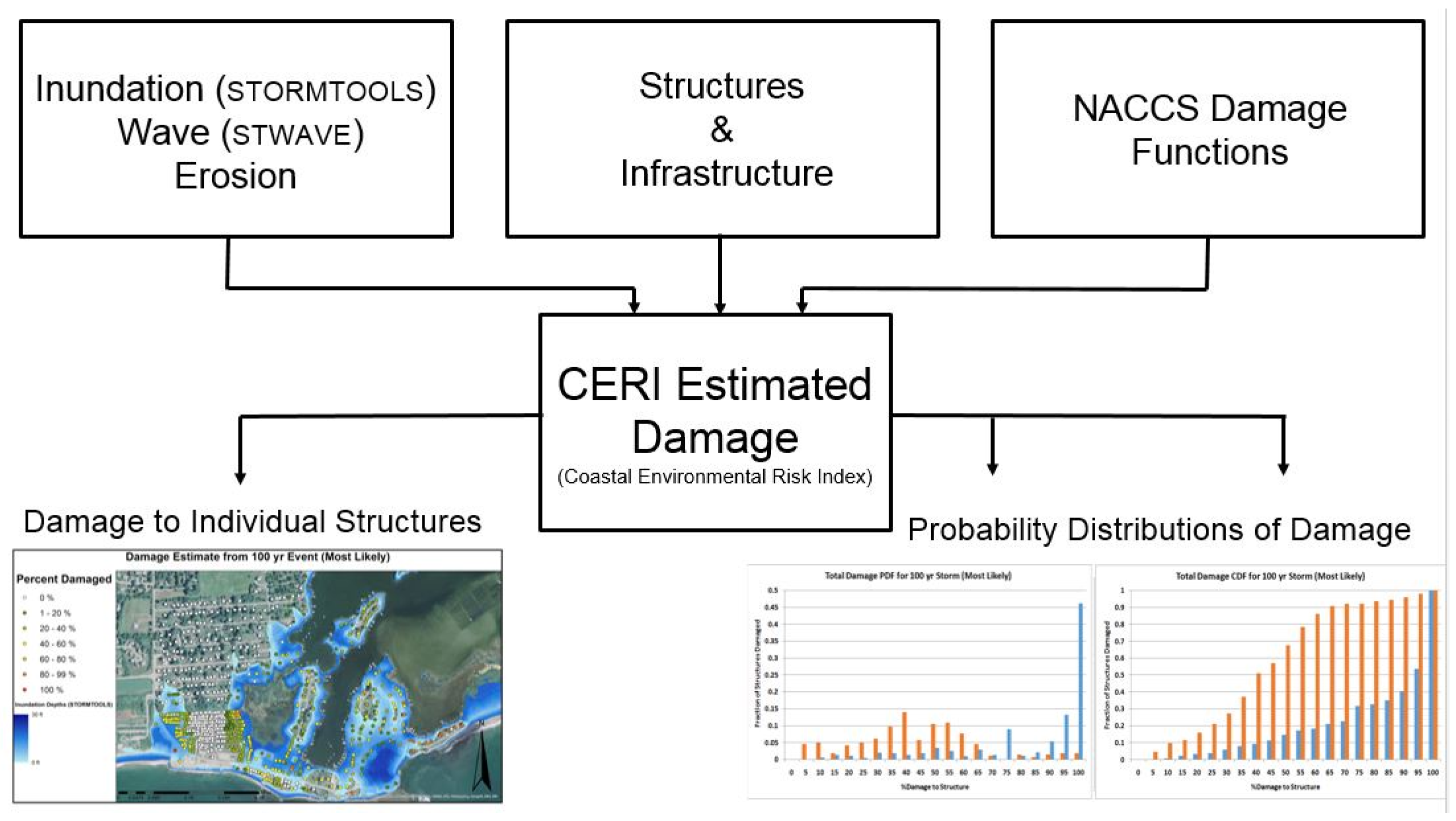
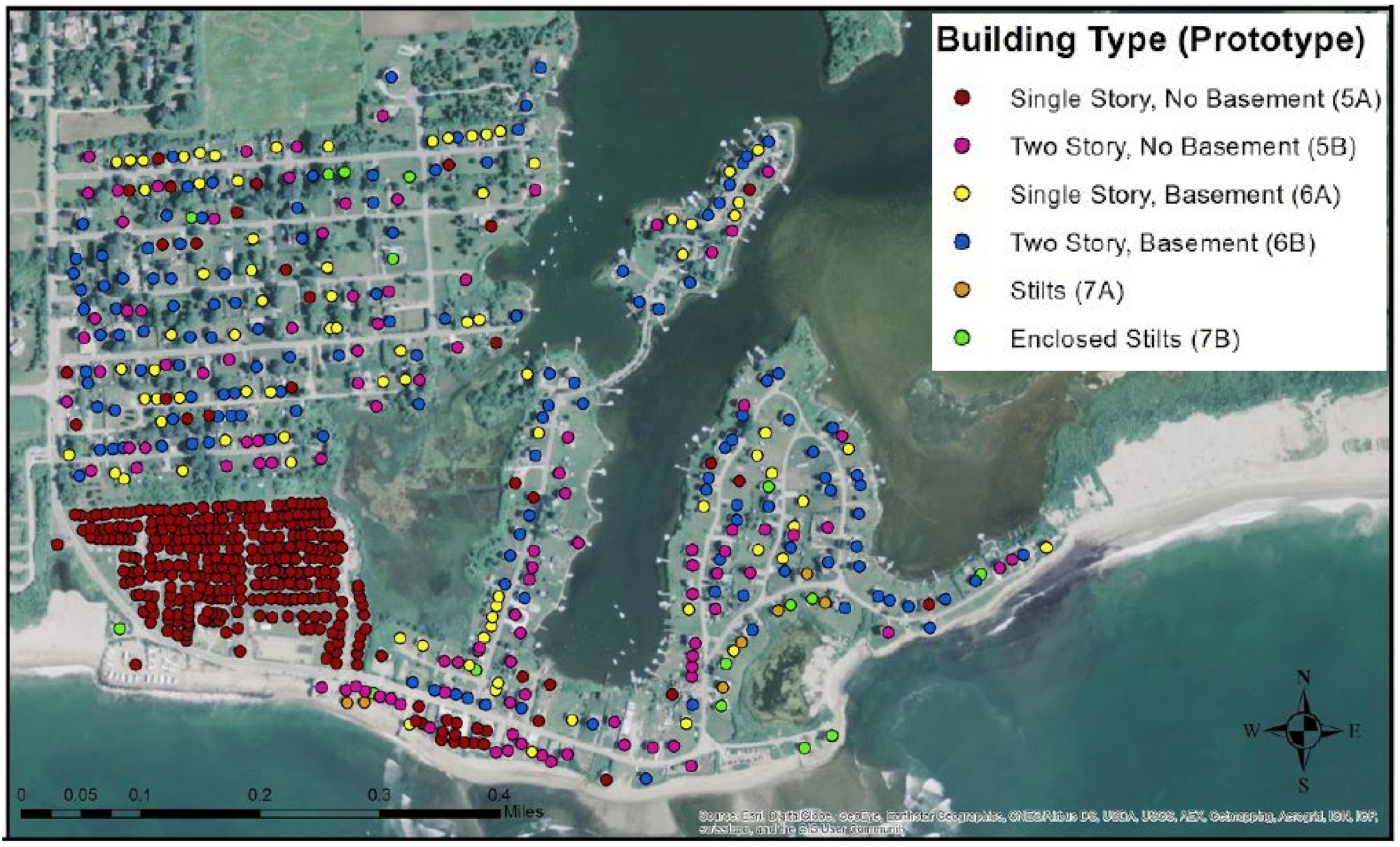
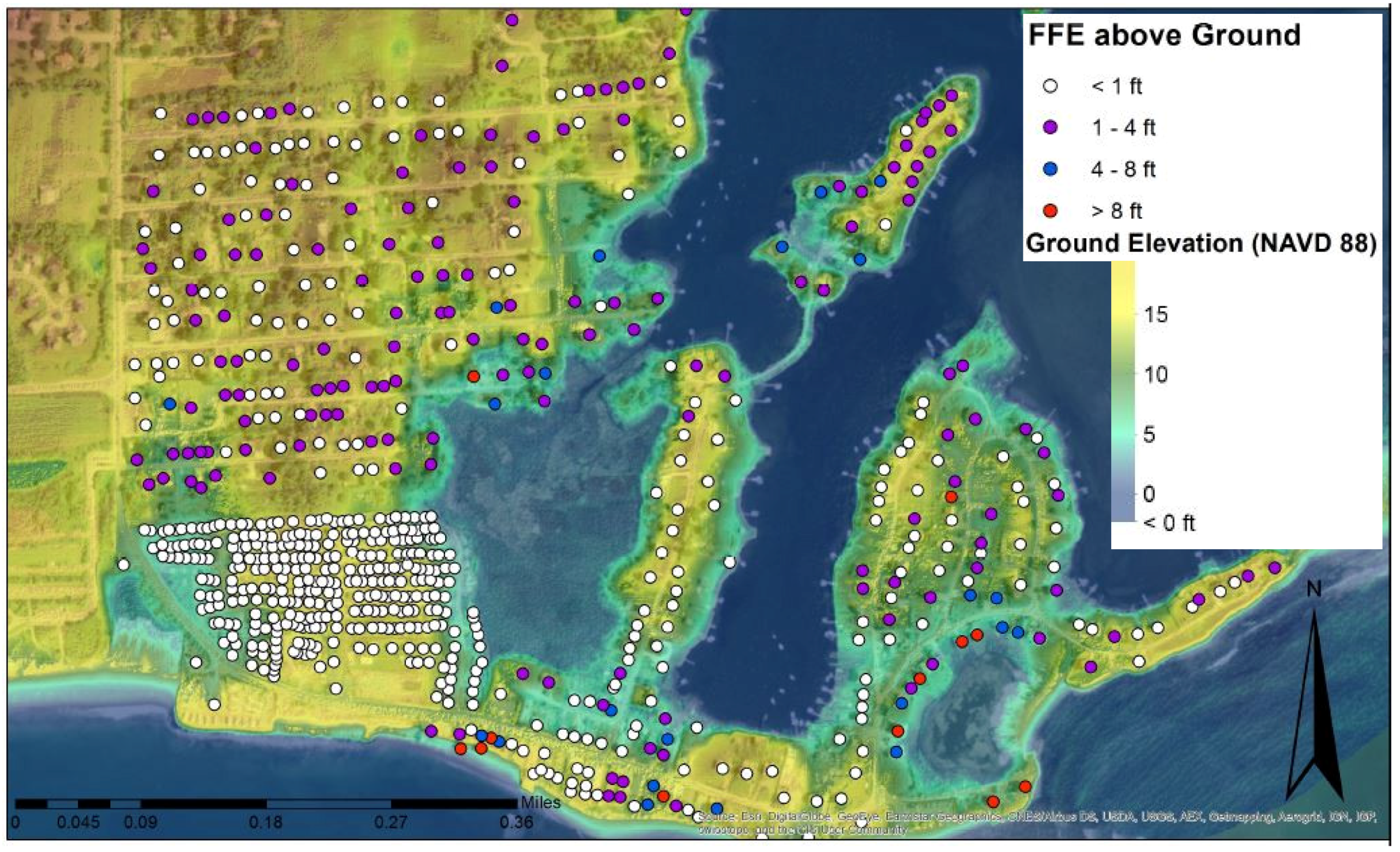
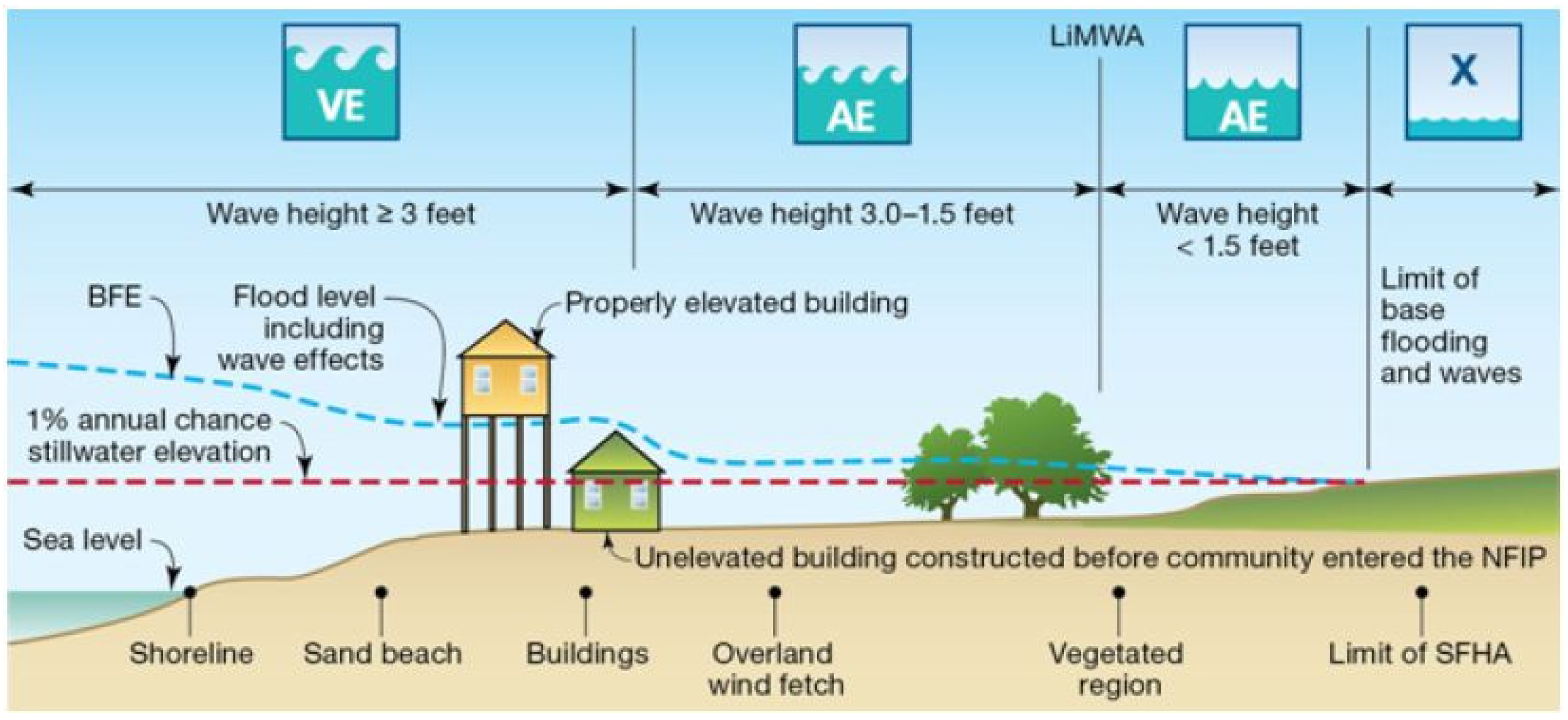
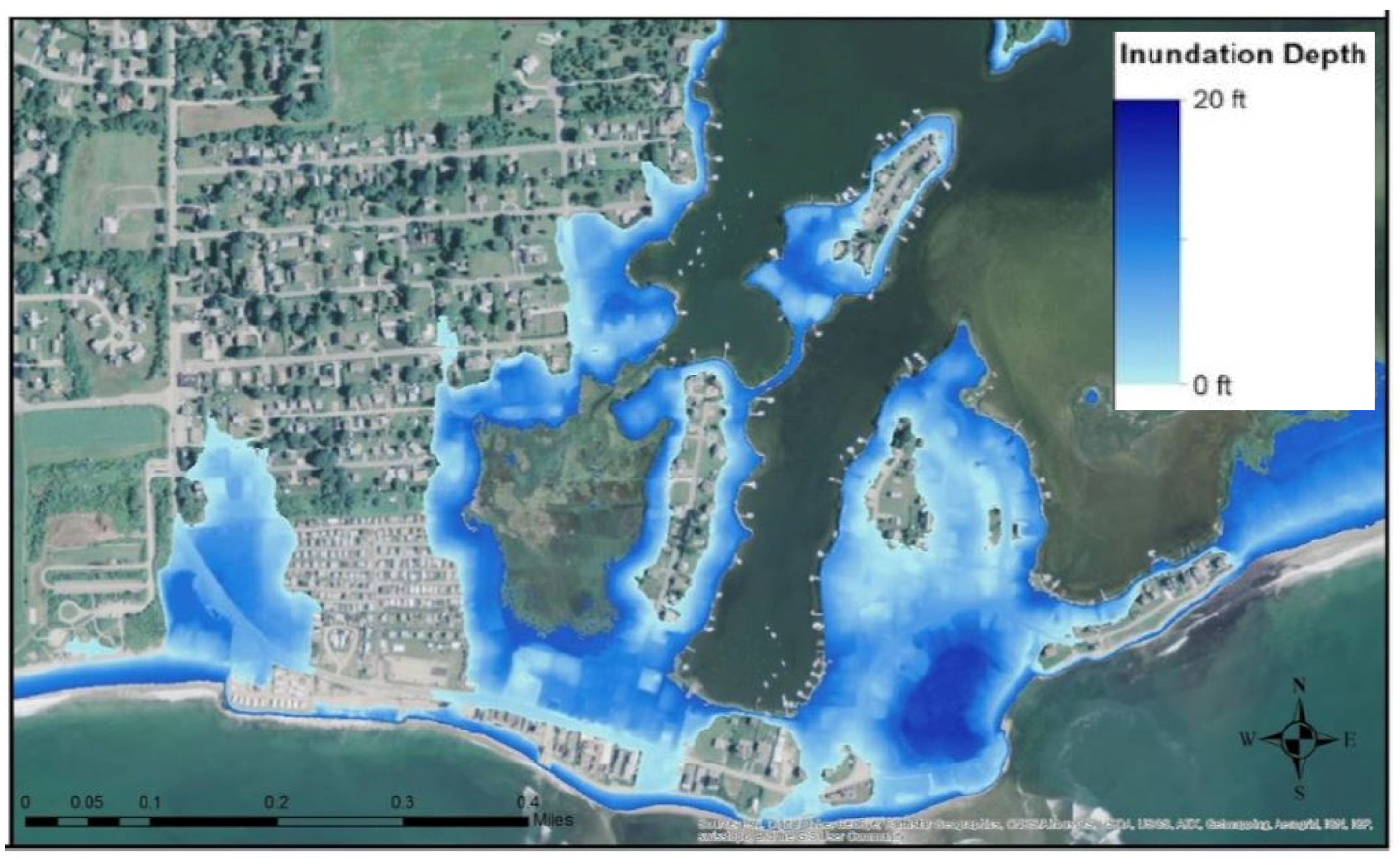
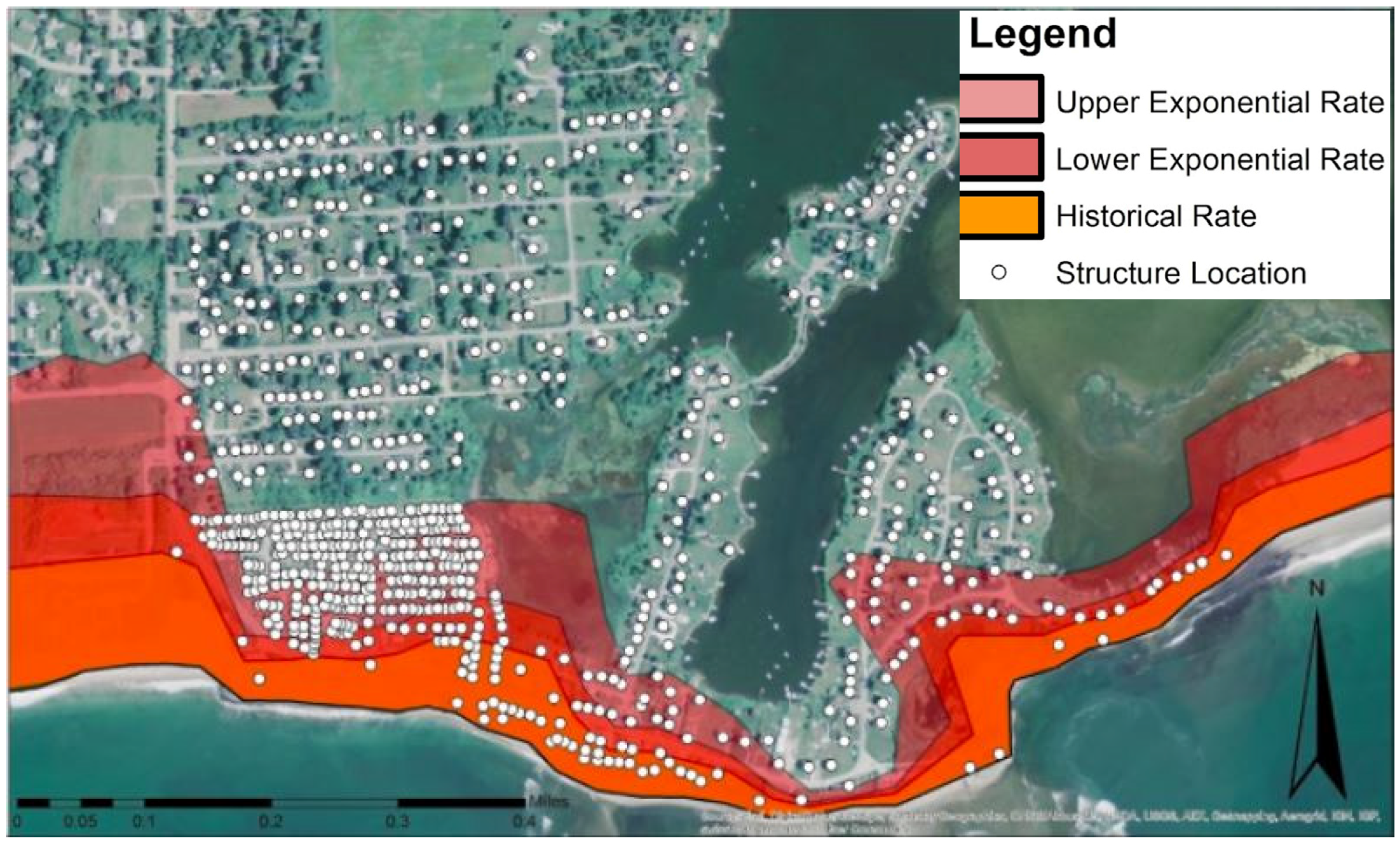
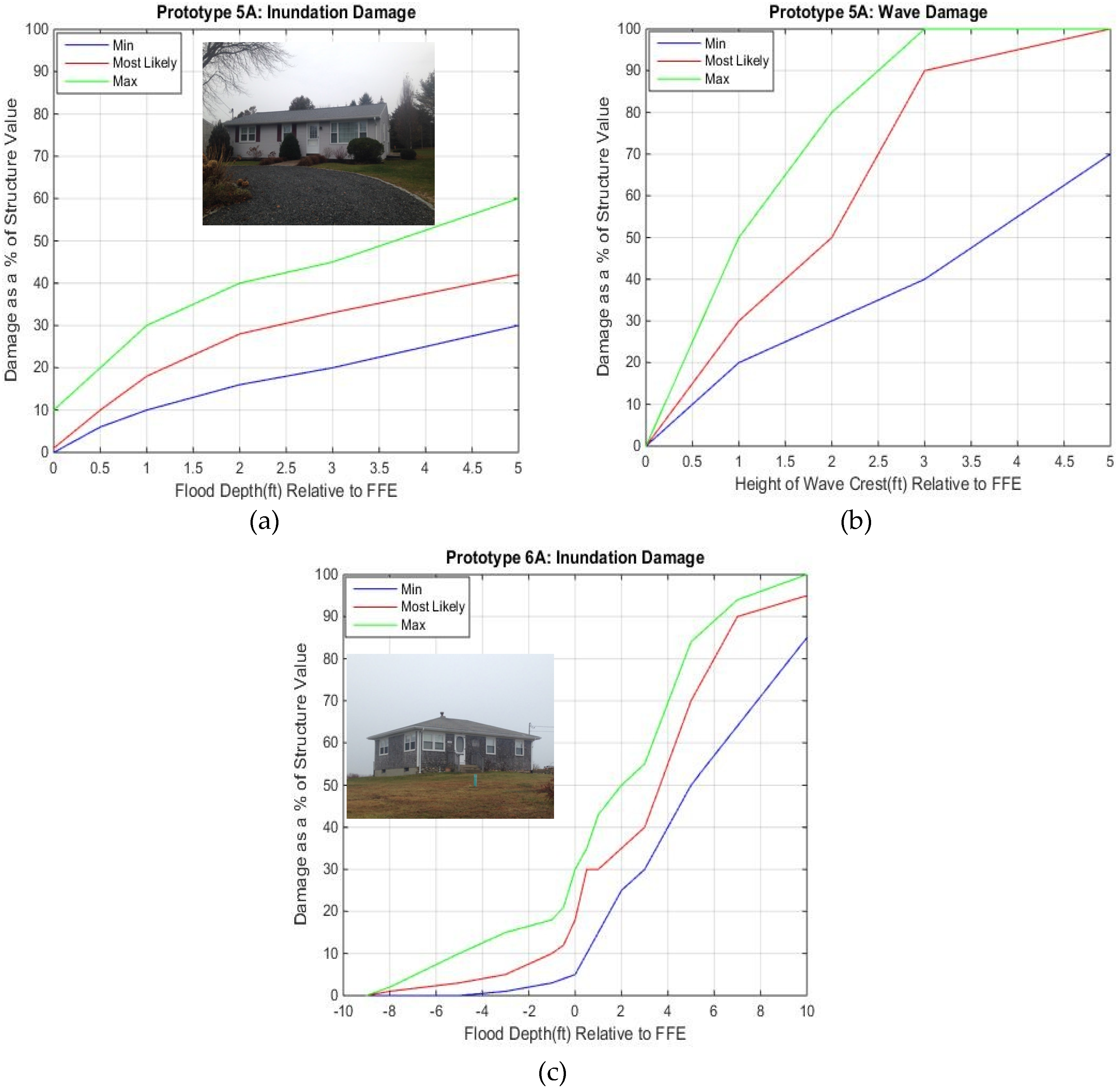
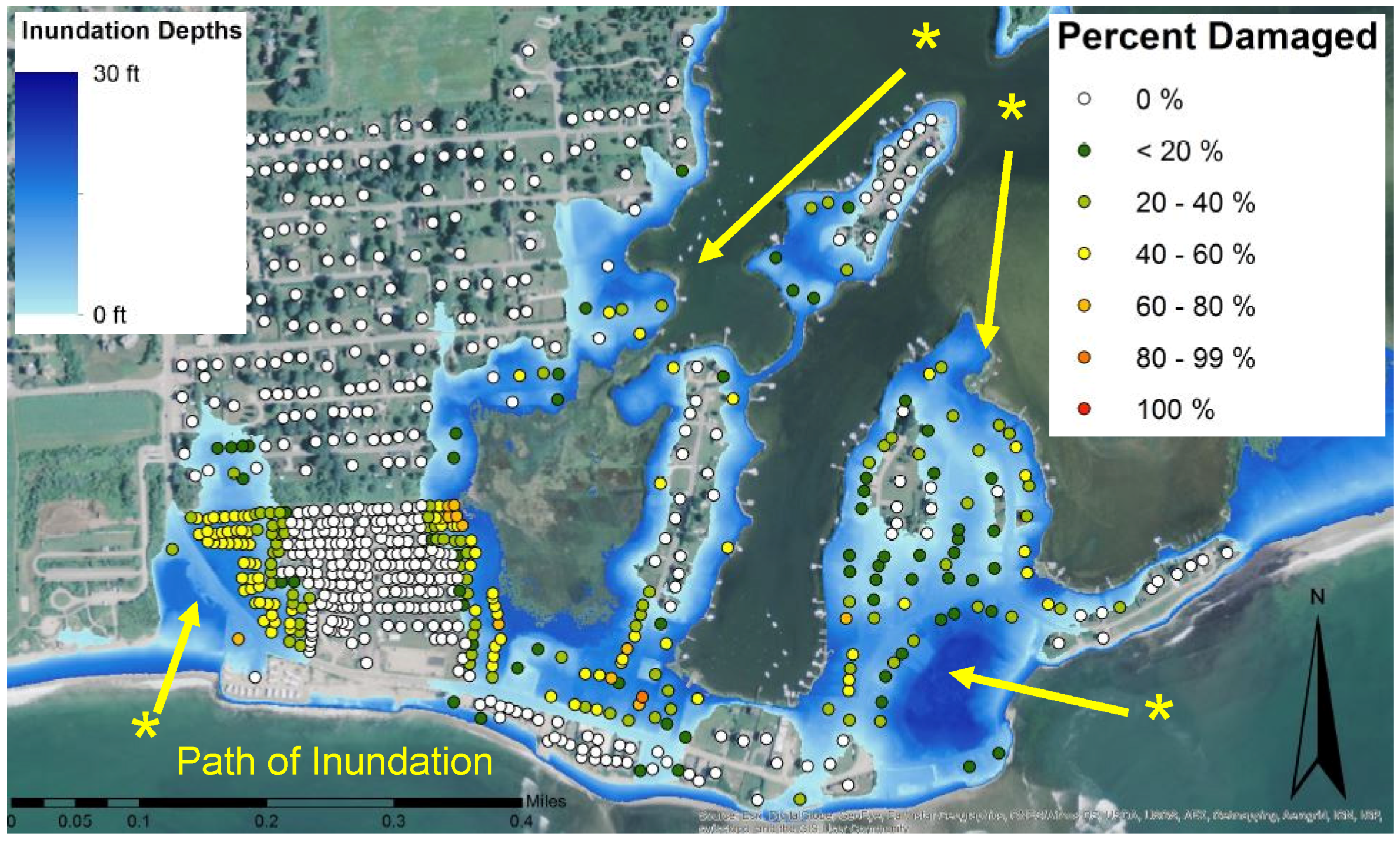

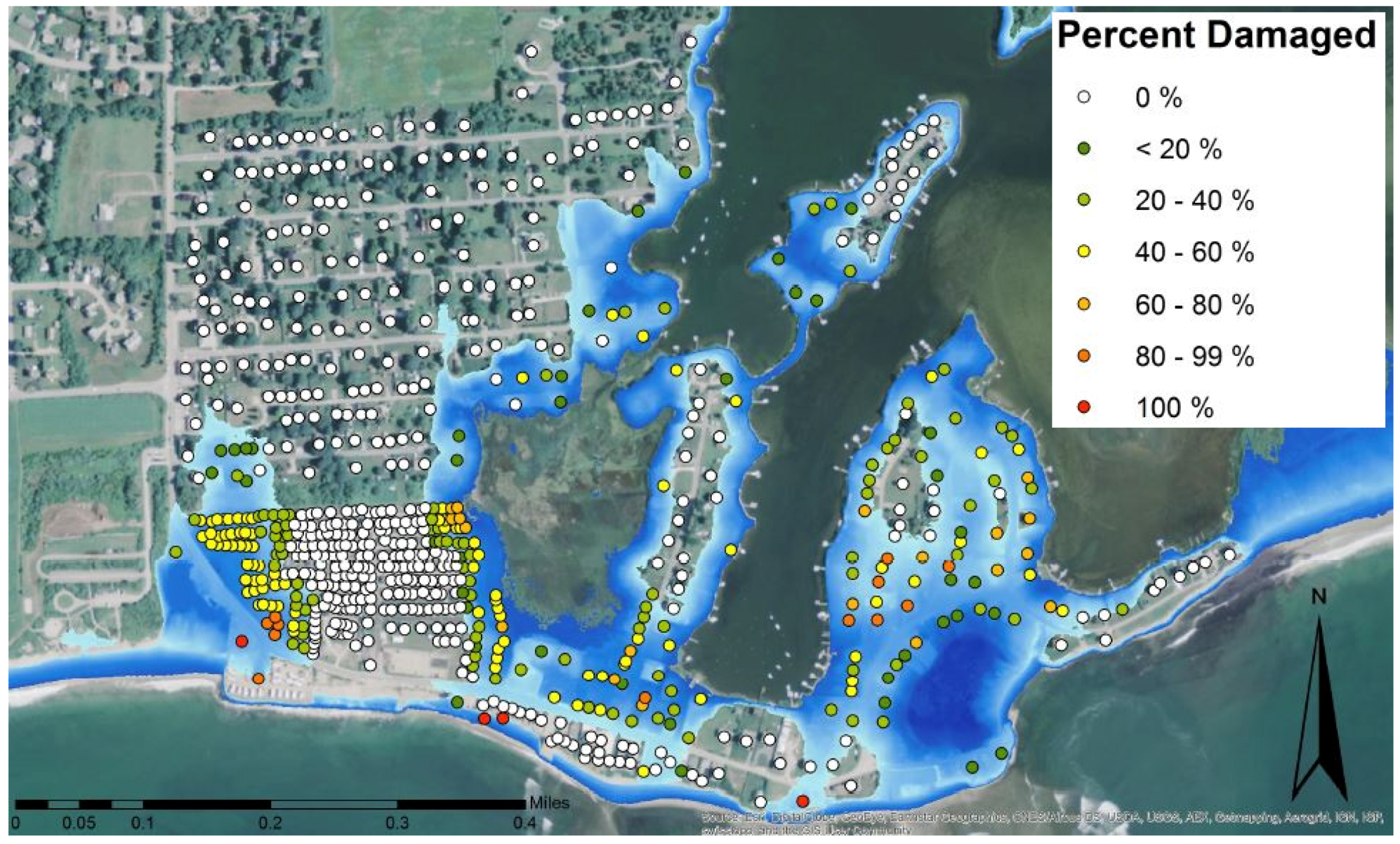
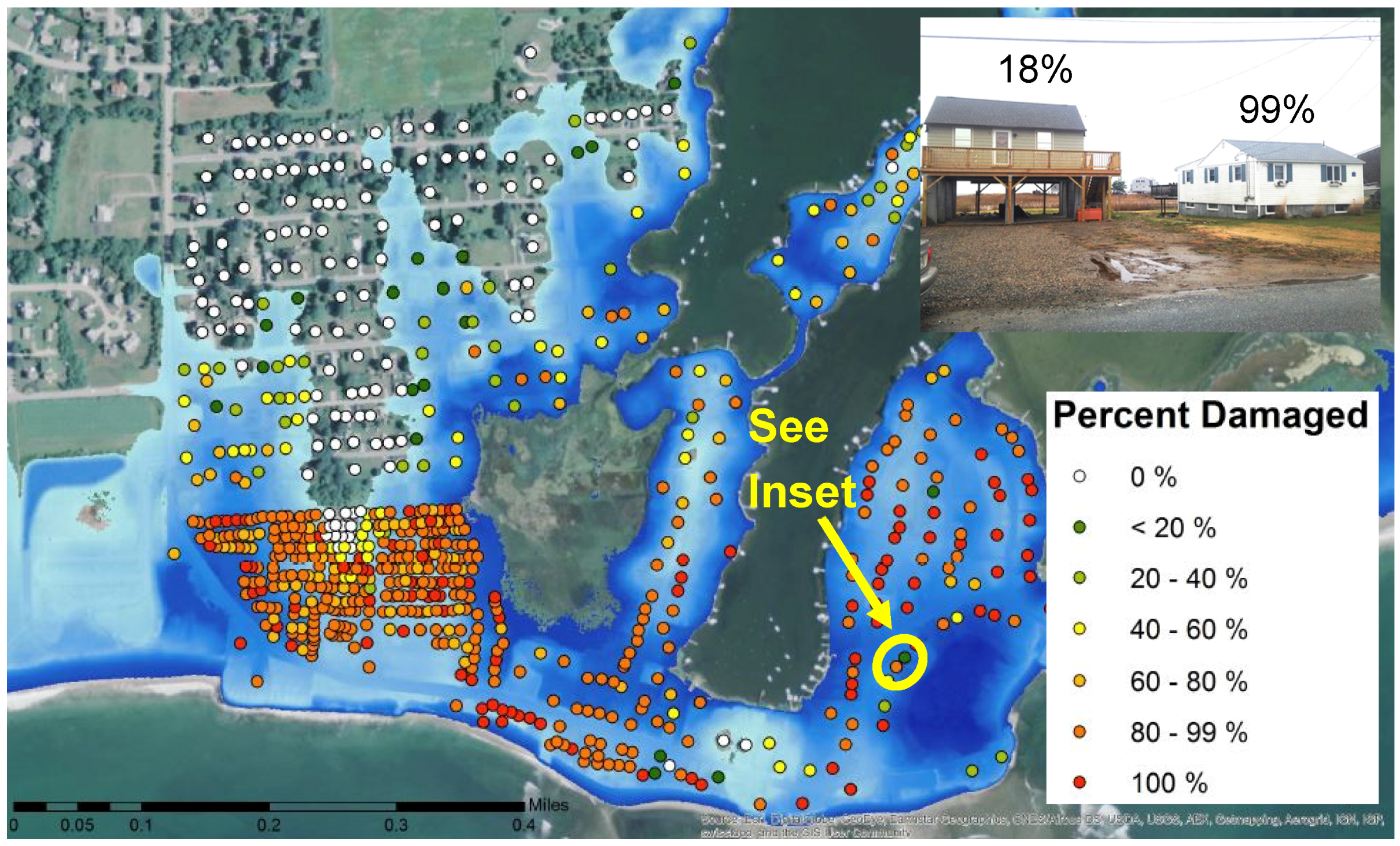
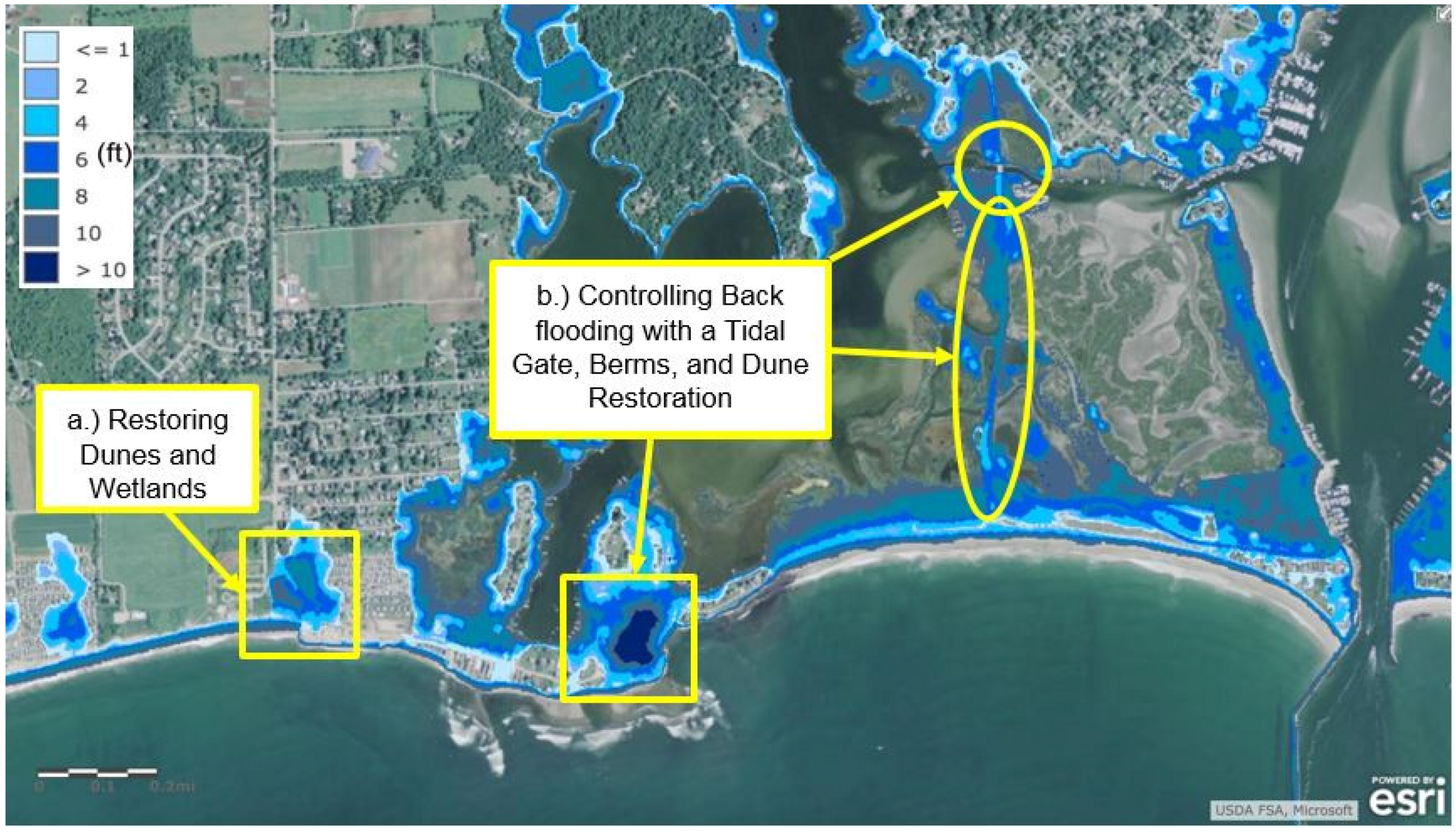
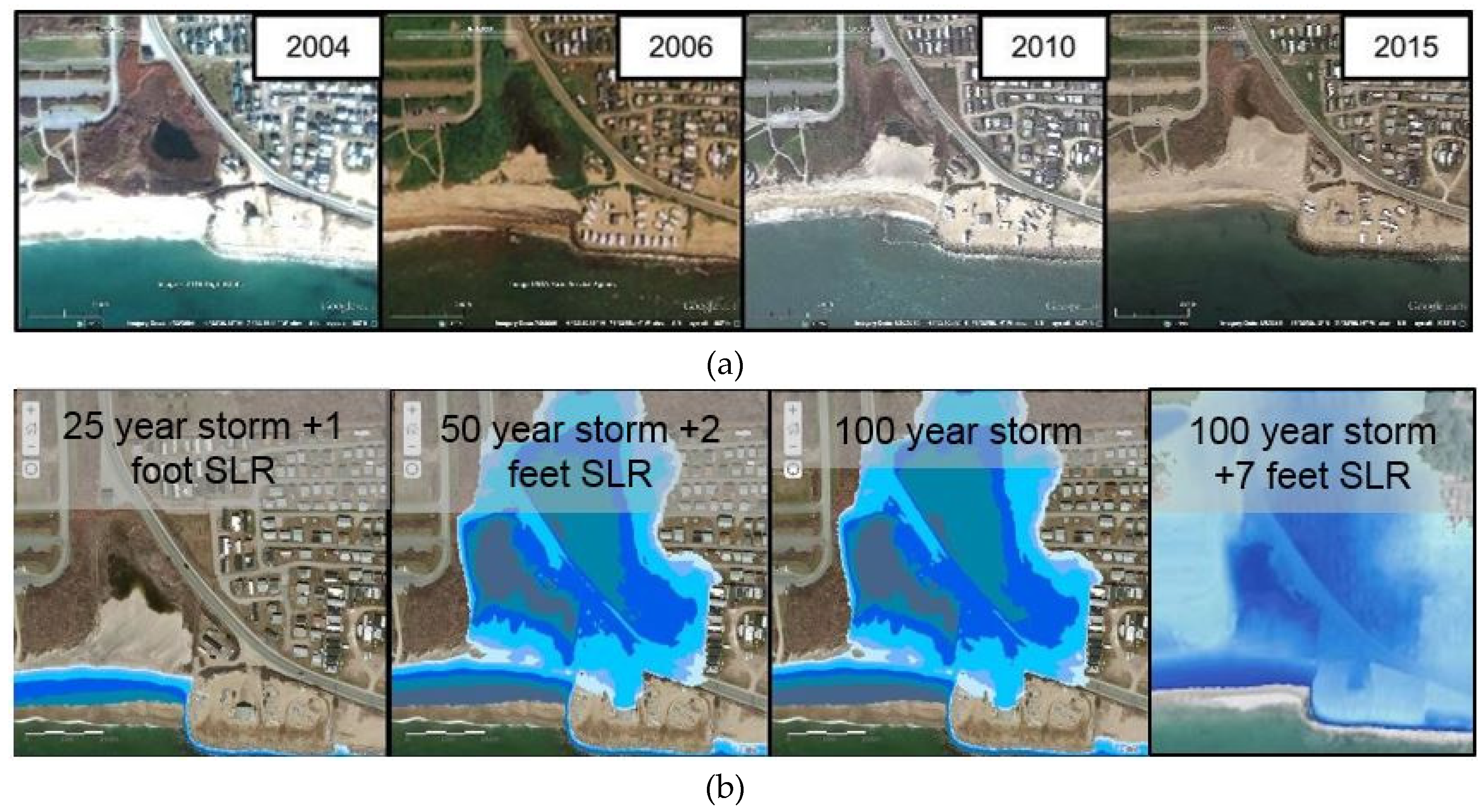

| Prototype (Number of Structures) | Structures with Damage (Number/%) | Structures with >50% Damage (Number/%) | ||
|---|---|---|---|---|
| (a) 100 Year Storm with No SLR | (b) 100 Year Storm with 7′ SLR 1 | (c) 100 Year Storm with No SLR | (d) 100 Year Storm with 7′ SLR | |
| 5A, Single story with no basement (359 Structures) | 128 (36%) | 336 (94%) | 48 (13%) | 314 (87%) |
| 5B, Two story with no basement (104 Structures) | 33 (32%) | 79 (76%) | 7 (7%) | 56 (54%) |
| 6A, Single story with basement (83 Structures) | 31 (37%) | 56 (67%) | 12 (15%) | 43 (52%) |
| 6B, Two story with basement (139 Structures) | 48 (35%) | 89 (64%) | 13 (9%) | 68 (49%) |
| 7A, Elevated building with open pile foundation (7 Structures) | 6 (86%) | 7 (100%) | 2 (29%) | 5 (71%) |
| 7B, Elevated building with enclosed pile foundation (16 Structures) | 8 (50%) | 11 (69%) | 1 (6%) | 7 (44%) |
| Total Number of Structures (708) | 254 (36%) | 578 (82%) | 83 (12%) | 493 (70%) |
| (a) Restoration of Dunes and Coastal Pond/Wetland | (b) Mitigation of Back Flooding | |
|---|---|---|
| Design Event | 100 year storm event | 25 year storm event |
| Number of Structures Protected | 81 | 70 |
| Additional Impacts of Adaptation | Also protects evacuation route for community | Protects inland structures outside the study area |
© 2016 by the authors; licensee MDPI, Basel, Switzerland. This article is an open access article distributed under the terms and conditions of the Creative Commons Attribution license ( http://creativecommons.org/licenses/by/4.0/).
Share and Cite
Small, C.; Blanpied, T.; Kauffman, A.; O’Neil, C.; Proulx, N.; Rajacich, M.; Simpson, H.; White, J.; Spaulding, M.L.; Baxter, C.D.P.; et al. Assessment of Damage and Adaptation Strategies for Structures and Infrastructure from Storm Surge and Sea Level Rise for a Coastal Community in Rhode Island, United States. J. Mar. Sci. Eng. 2016, 4, 67. https://doi.org/10.3390/jmse4040067
Small C, Blanpied T, Kauffman A, O’Neil C, Proulx N, Rajacich M, Simpson H, White J, Spaulding ML, Baxter CDP, et al. Assessment of Damage and Adaptation Strategies for Structures and Infrastructure from Storm Surge and Sea Level Rise for a Coastal Community in Rhode Island, United States. Journal of Marine Science and Engineering. 2016; 4(4):67. https://doi.org/10.3390/jmse4040067
Chicago/Turabian StyleSmall, Christopher, Tyler Blanpied, Alicia Kauffman, Conor O’Neil, Nicholas Proulx, Mathew Rajacich, Hailey Simpson, Jeffrey White, Malcolm L. Spaulding, Christopher D.P. Baxter, and et al. 2016. "Assessment of Damage and Adaptation Strategies for Structures and Infrastructure from Storm Surge and Sea Level Rise for a Coastal Community in Rhode Island, United States" Journal of Marine Science and Engineering 4, no. 4: 67. https://doi.org/10.3390/jmse4040067
APA StyleSmall, C., Blanpied, T., Kauffman, A., O’Neil, C., Proulx, N., Rajacich, M., Simpson, H., White, J., Spaulding, M. L., Baxter, C. D. P., & Swanson, J. C. (2016). Assessment of Damage and Adaptation Strategies for Structures and Infrastructure from Storm Surge and Sea Level Rise for a Coastal Community in Rhode Island, United States. Journal of Marine Science and Engineering, 4(4), 67. https://doi.org/10.3390/jmse4040067






